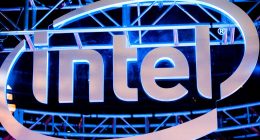As we’re inching closer to the release date of the Windows 10 Creators Update, Microsoft is detailing more of its upcoming improvements and features. This said update, expected to drop early next year, is more focused on the creative and artistic crowd. But the Redmond giant has today in a blog post shed light on features that’d attract enterprise and business users to the platform.
Starting off with numbers, the company says that the adaptation of Windows 10 has happened at an exemplary pace – even in workplaces. The enterprise software deployment, the blog notes, have increased three-fold in the last six months. Thus, Microsoft is now looking to bank on this demand to further its presence within enterprise organisations.
Windows 10 Creators Update will deliver new features and capabilities for modern IT and bring even more security advancements to our enterprise customers as IT administrators drive digital transformation to optimize operations, enhance productivity and maintain the most secure environment possible,
says Rob Lefferts, Director of Program Management, Windows Enterprise and Security in the blog post.
Security Intelligence
With the Creators Update, Microsoft aims to make Windows 10 more secure for IT administrators – to protect, defend and also respond to threats on their network and devices. The already available Windows Security Center acts as a centralized view for monitoring, tracking and acting on threats in an intuitive and integrated manner.
But, the company is now looking to further enhance this protection using the Windows Defender Advanced Threat Protection (ATP) dashboard in Creators Update. This will enable admins to investigate and respond to network attacks in a timely manner as the level of sophistication of these attacks is becoming far more complex over time. The tools being used by attackers are now also more complex, thanks to deep pockets of their benefactors.
So, Microsoft is expanding the scope of ATP network sensors to detect threats within memory and kernel-level exploits. It is no longer conducting a minimal sweep of just the disks but is allowing admins to monitor loaded drivers and in-memory activities. This will also enable them to detect patterns of injection, reflective loading, and in-memory modifications.
With the Windows 10 Creators Update, Microsoft Threat Intelligence (MTI) will allow admins to “feed their own intelligence into the Windows Security Center for alerts on activities based on their own indicators of compromise.” Then, in an attempt to protect their network environment, the machine learning model will begin to identify and block malware even more quickly.
IT Management
Microsoft estimates that switching to Windows 10 enables admins to witness a 15 percent improvement in management time.To further streamline the process, the company is looking to shift resources and time-intensive tasks to the cloud. It will enable Windows users to “acquire, provision, support, and secure devices more easily.”
With respect to the same, Windows 10 will include a slew of device management enhancements in the coming Creators Update. This includes improved Windows Analytics, BYOD provision, and others.
This Analytics dashboard will enable organisations to better manage and support Windows 10 devices. It will provide new insights and ensure to keep a check on device health processes with the company. Also, Microsoft is releasing a simple and automated conversion tool to update your device from the old BIOS-style firmware to the newer UEFI.
In addition, Microsoft is also introducing a variety of device management options to organisation adapting to the Window 10 infrastructure. This will enable them to further bolster support for BYOD (bring your own device) without the responsibility of thinking about data theft and security. The blog post reads:
As employees use their own devices at work more and more, we are providing IT with oversight to apply policies to the applications employees use to be productive. This helps keep corporate data more secure without taking on the added responsibility of managing employees’ personal devices.
The Tech Portal is published by Blue Box Media Private Limited. Our investors have no influence over our reporting. Read our full Ownership and Funding Disclosure →






